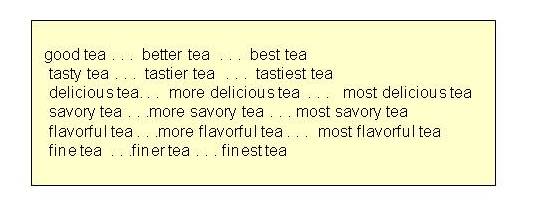DETERMINERS
Determiners signal
(“determine”) that a noun will follow. Unlike
adjectives, which also signal that a noun will follow, determiners cannot add
the inflectional morphemes -er and -est. In addition,
because they are function words, determiners do not have other forms or
synonyms. Their "meaning" is their function: to signal that a noun
will follow.
The following examples illustrate the
difference:
Determiner + noun tea

Adjective + noun tea

Note that each adjective has a distinct
meaning.
In addition, each adjective may add its
comparative (-er) and superlative (-est) form
Types of determiners
1.
articles (the hat, a hat, an
opera)
2. possessive nouns / pronouns (Mary’s
hat, her hat) (more about possessive nouns)
3. numbers (five
hats, eight hats, twenty hats)
4. indefinite pronouns (each
hat ,some hats, both hats)
(more about indefinite pronouns)
5. demonstrative pronouns (that
hat, those hats)
(more about demonstrative pronouns)
Native speakers of
English learn when to use articles with nouns as they learn to speak.
However, learning when
to use articles is often difficult for non-native speakers.
The difference between
article use with town and city illustrates the difficulty:
Correct: I walked to the town.
(article the before town)
Correct: I walked to town. (no
article before town)
Correct: I walked to the city.
(article the before city)
Incorrect: I walked to city. (no
article before city)